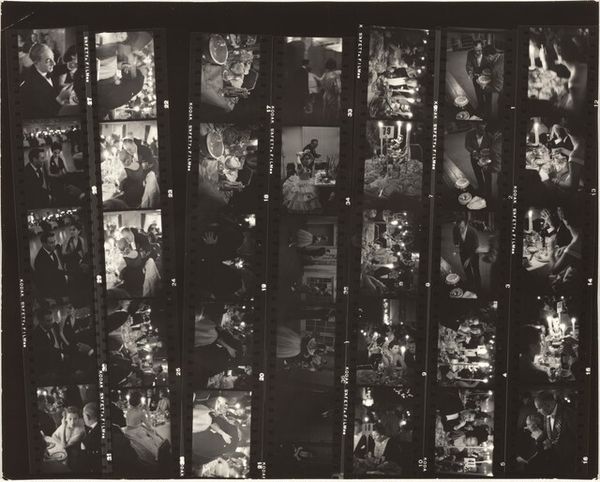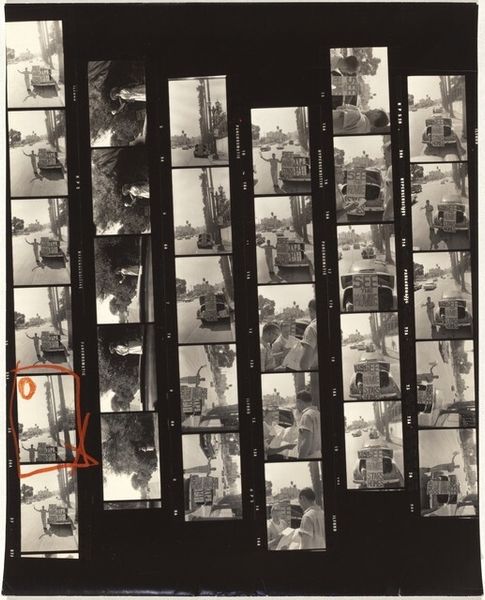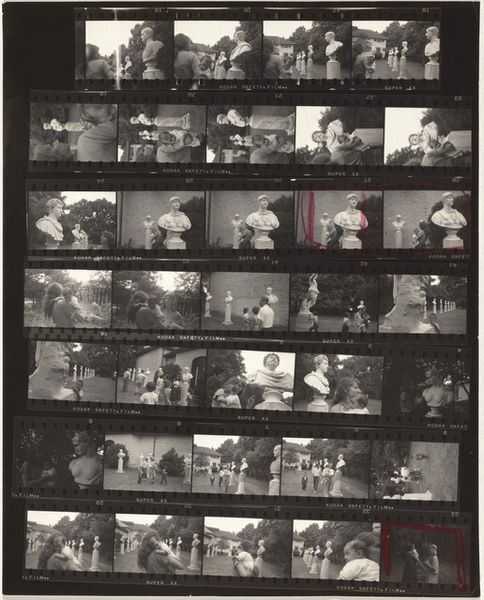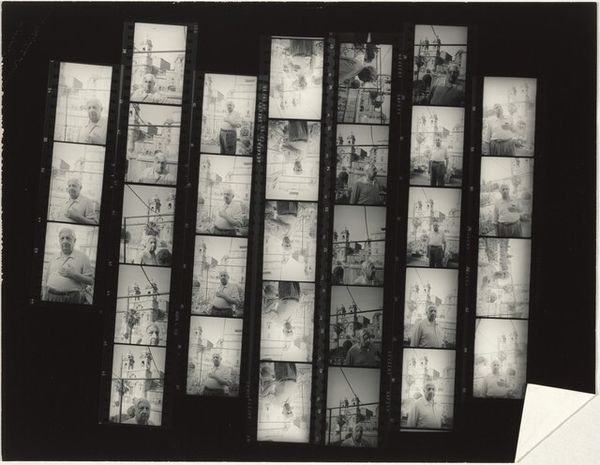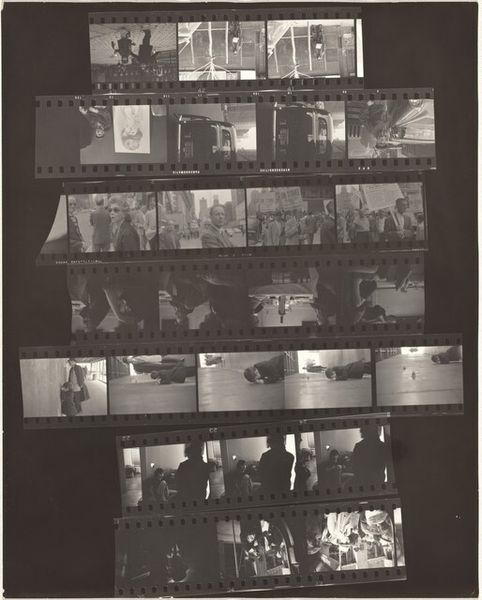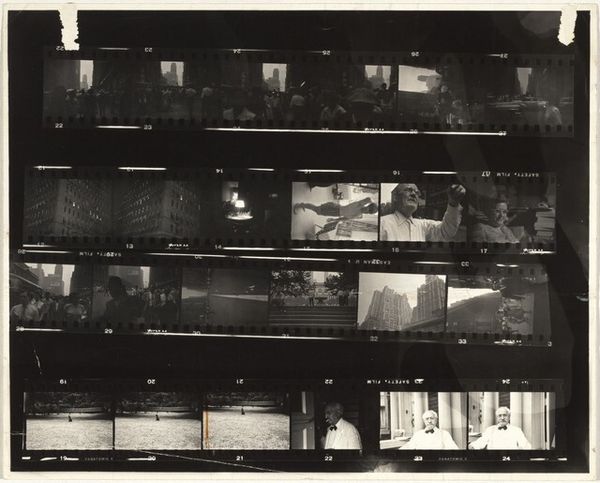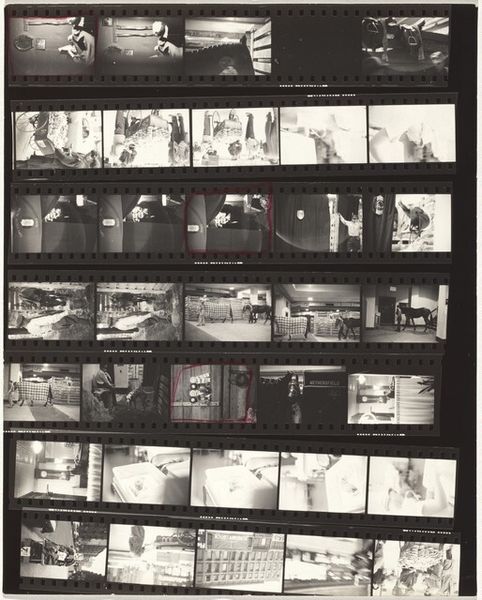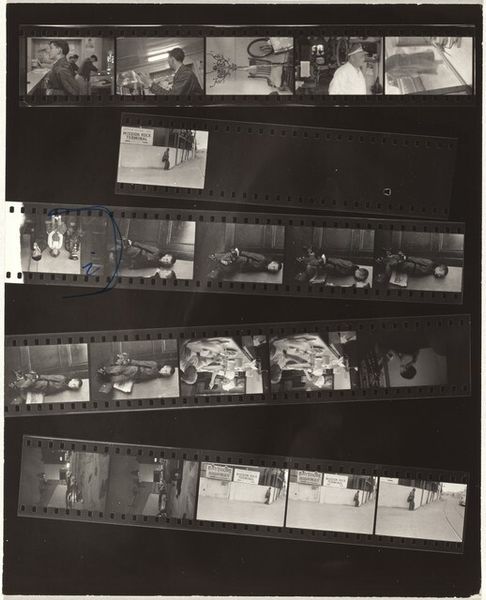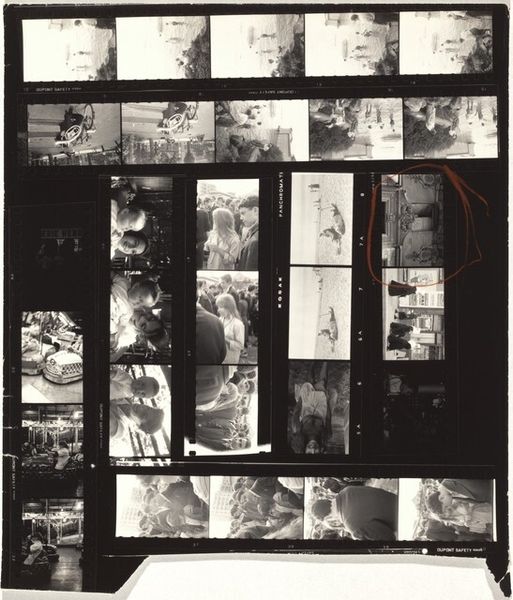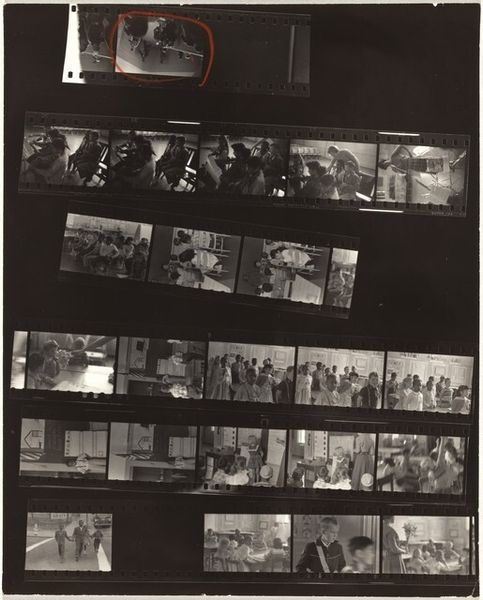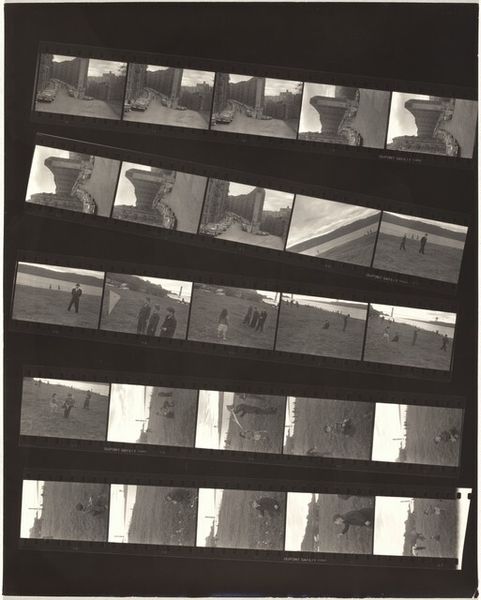
Guggenheim 487--Twentieth Century Fox film studio, Burbank, California 1956
0:00
0:00
photography
#
film photography
#
photography
#
photojournalism
#
film
Dimensions: overall: 20.5 x 25.3 cm (8 1/16 x 9 15/16 in.)
Copyright: National Gallery of Art: CC0 1.0
Curator: This piece, “Guggenheim 487--Twentieth Century Fox film studio, Burbank, California,” comes to us from Robert Frank in 1956. Editor: It gives the feeling of raw visual data, like glimpsing unedited rushes from a documentary. What strikes me immediately is how this layout on the page subverts the aura surrounding Hollywood's carefully manufactured image. Curator: That is part of its power, isn’t it? Presenting this unvarnished gaze behind the scenes of such a powerful cultural apparatus. Frank’s image carries so much symbolism here; a cultural mirror. It’s constructed of strips of negatives—a collection of different takes, a composite to examine how American myths are literally processed, made piece by piece, from various angles. Editor: It almost feels anthropological, archiving this very American space. The juxtaposition of individuals speaking into cameras, perhaps delivering rehearsed lines, with candid moments of studio workers operating machinery or lining up, brings together disparate segments of a manufactured reality. How might one interpret these symbols today, compared to during the Red Scare of the '50s, as this all-American art form of Hollywood began to really spread worldwide? Curator: Excellent point. In the post-war period, Hollywood's ideological function becomes so pronounced, so this photo is also loaded with its psychological resonance of power. I'm particularly intrigued by how those who were visible or invisible—foregrounded vs. relegated—mirrored similar conditions present in mainstream society at that time. Frank also captures the almost sterile environment where stories that were supposed to reflect American society were being developed, reflecting an inherent paradox between reality and representation. Editor: Definitely. This is how the cultural stories are assembled that create so many lasting impressions and reinforce many power structures of its time. I’m especially drawn to that roll along the bottom showing just legs—hinting at erasure and fragmentation. This selection of details shows some labor realities hidden behind the end product. Curator: So in a sense, what Frank captured with this image—how film narratives and symbolic frames were made visible alongside studio environments—creates an interesting study of image production as ideological engineering, not just as commercial enterprise. Editor: Absolutely, this image isn’t just a snapshot; it serves as a multilayered dissection that challenges Hollywood's mystique, and prompts conversations regarding agency, representation, and the construction of cultural narratives. Curator: Well said; quite powerful when you recognize those reverberations across generations. Editor: Indeed. Food for thought, as we exit and engage other constructs and representations.
Comments
No comments
Be the first to comment and join the conversation on the ultimate creative platform.
